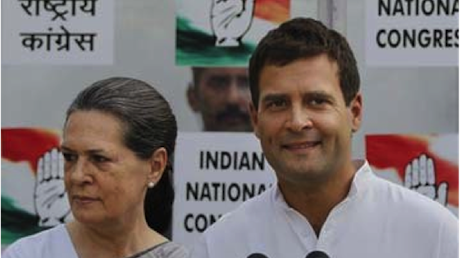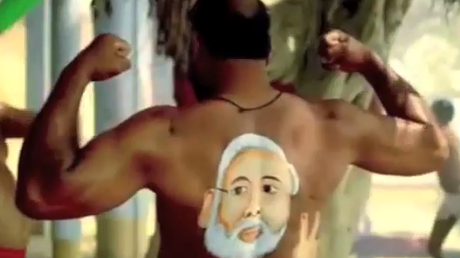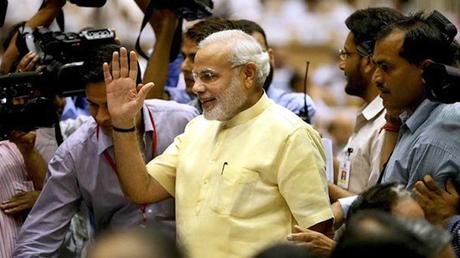By Nicholas Reece and Souresh Roy
INTRODUCTION
India has a multi-party system that from 1989 onwards has required the formation of coalitions in order to form government.
There are six national parties, the largest of which are the Bharatiya Janata Party (BJP) and the Indian National Congress. Congress is the lead party in the United Progressive Alliance (UPA), a coalition of parties which has governed for the last 10 years under Prime Minister Manmohan Singh. The BJP is the lead party in the National Democratic Alliance (NDA), a coalition of parties that is currently in opposition.
India also has 54 regional parties that have become an increasingly important force in elections in recent decades. The decisions by these parties about which coalitions they join is crucial to determining power and the ultimate outcome of elections.
Categorising parties: National, State, Unrecognised
Political parties that wish to contest local, state or national elections are required to be registered by the Election Commission of India. In order to gain “recognition” in a state, the party must have had political activity for at least five continuous years, and send at least 4% of the state's quota to the Lok Sabha (India's Lower House), or 3.33% of members to the Legislative Assembly of that state.
“Unrecognised parties” are those parties that have not been able to yet meet these requirements. If a party is recognised in four or more states, it is declared as a "National party" by the Electorate. Otherwise, it is known as a "State Party".
All parties contesting the elections have to choose a symbol from a prescribed list of available symbols offered by the Election Commission.
NATIONAL PARTIES
INDIAN NATIONAL CONGRESS (INC)
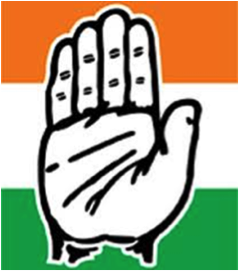
History: The Congress Party is India’s oldest political party, having been founded in 1885 and led and built from 1921 by Mahatma Gandhi, the party’s father figure. Following the 2009 national election Congress secured 206 seats in the Lok Sabha making it the single largest party in the Parliament. Congress leads the governing coalition of parties known as the United Progressive Alliance (UPA). Congress has been the dominant party of the post-Independence era. The party is controlled by the “first family” of Indian politics, the Nehru-Gandhi dynasty. Congress Prime Ministers include Jawaharlal Nehru, Lal Bahadur Shastri, Indira Gandhi, Rajiv Gandhi, P.V.Narasimha Rao. The current Indian Prime Minister, Manmohan Singh is a member of the Congress Party. A renowned economist, he is the only Prime Minister since Jawaharlal Nehru to return to power after completing a full five-year term, and the first Sikh to hold the office. From the 1960s many regional parties and the BJP started challenging Congress’s monopoly on power.
Philosophy: Congress has historically been a left-of-centre political party and for much of its history supported a socialist agenda. In elections the party runs on a pro-poor political platform. Beginning around 1984 the party began moving toward the ideological centre.
Party Organisation: Long-time Congress party leader and Prime Minister Indira Gandhi created a top-down structure for the party in which party leaders largely appoint party officials. In recent times, Congress has undertaken party reform to further democratise the party.
This election: Most opinion polls suggest that Congress is going to lose government after the 2014 election. After 10 years in government and long running corruption allegations there is a strong anti-incumbency public mood. Congress has selected Rahul Gandhi (Indira Gandhi’s grandson) as the lead campaigner for the party in the election and will be the party’s candidate for Prime Minister if they can secure sufficient support in the Lok Sabha.
BHARATIYA JANATA PARTY (BJP)
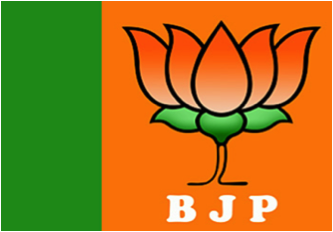 History and philosophy: The BJP is the second major political party in India today. Established in 1980, the party’s roots are in the Bharatiya Jana Sangh, formed in 1951 by Syama Prasad Mookerjee. For the 1977 general elections, the Jana Sangh merged with several parties to form the Janata Party to defeat the incumbent Congress party. Following Janata's dissolution in 1980, the rank and file of the erstwhile Jana Sangh reconvened as the Bharatiya Janata Party. Although initially unsuccessful, winning only two seats in the 1984 general election, the BJP soon grew in strength. BJP leads the national political grouping the National Democratic Alliance, a coalition of parties that are in opposition in the Lok Sabha. The BJPs traditional supporter base is amongst urban, lower-middle-class groups as well as amongst Hindu nationalists. The party has campaigned against Muslims as a scapegoat for frustrations amongst citizens. In regional terms its base has been in north-central India. Since the mid 1980s the party has expanded its base and enjoyed more electoral success. This has been derived from more centralist policies, better organisation of its election campaigns, careful selection of party cadres and a clear and respected authority line within the party.
History and philosophy: The BJP is the second major political party in India today. Established in 1980, the party’s roots are in the Bharatiya Jana Sangh, formed in 1951 by Syama Prasad Mookerjee. For the 1977 general elections, the Jana Sangh merged with several parties to form the Janata Party to defeat the incumbent Congress party. Following Janata's dissolution in 1980, the rank and file of the erstwhile Jana Sangh reconvened as the Bharatiya Janata Party. Although initially unsuccessful, winning only two seats in the 1984 general election, the BJP soon grew in strength. BJP leads the national political grouping the National Democratic Alliance, a coalition of parties that are in opposition in the Lok Sabha. The BJPs traditional supporter base is amongst urban, lower-middle-class groups as well as amongst Hindu nationalists. The party has campaigned against Muslims as a scapegoat for frustrations amongst citizens. In regional terms its base has been in north-central India. Since the mid 1980s the party has expanded its base and enjoyed more electoral success. This has been derived from more centralist policies, better organisation of its election campaigns, careful selection of party cadres and a clear and respected authority line within the party.
Policies: The key philosophical characteristics of the BJP include: right-leaning, Hindu-nationalist, social conservatism, self reliance, foreign policy centred on nationalist principles, neo-liberal economic policy. The BJP was the first major party to mobilize explicitly on the basis of religious identity, namely Hinduism. In terms of its policy outlook the BJP supports economic liberalization and stability, a universal civil code for all Indians and a stronger nationalist foreign policy.
AAM AADMI PARTY (AAP)

History: The Aam Aadmi Party (“Common Man Party”, or AAP) was formally launched on 26 November 2012. During its short existence AAP has stirred great excitement in Indian politics and enjoyed some early electoral success. But the future of the party is far from assured and the 2014 election is a critical test for the fledgling political party. AAP came into existence out of the India Against Corruption movement. The AAP has led several protests since its formation. Among these was a campaign against an alleged nexus between government and private corporations relating to price rises for electricity and water in Delhi. Another saw the party demanding justice for victims of sexual harassment and rape, including the introduction of a stronger anti-rape law.
The party's first electoral test was in the 2013 Delhi legislative assembly election, from which it emerged as the second-largest party, winning 28 of the 70 seats. With no party obtaining an overall majority, the AAP formed a minority government with conditional support from the Indian National Congress.
In terms of political philosophy and personnel, AAP is a melting pot of left, right and centre. The party says that it does not have an ideology. This is also a criticism that is made against the party.
The AAP government in Delhi found it tough to transform itself from an activist outfit to a leading political party and governing body. The founder of AAP, Arvind Kejriwal, lasted just 49 days as the Chief Minister of Delhi before he resigned over the failure of critical legislation to pass. This has led to him being recently labelled by the BJP as “AK49”.
This election: AAP is contesting around 400 seats in the 2014 parliamentary election. For the AAP, the election will demonstrate whether the party is a one-time phenomenon confined to Delhi only or something greater.
REGIONAL PARTIES
Overview: India has been governed by coalitions since 1989 (the “post-Congress era”). At least two factors explain this development:
1. The increasing authority of states in the Indian federation.
2. The emergence of regional parties and the demise of national parties.
This has robbed Congress and BJP of much of their support. It means that in terms of forming government the brokering of alliances has become as important as securing voter support.
Some of the regional parties who are expected to play a crucial role in the upcoming elections are as follows:
ALL INDIA ANNA DRAVIDA MUNNETRA KAZHAGAM (AIADMK)
The AIADMK is a state political party dominant in Tamil Nadu and Puducherry. Currently it is in power in Tamil Nadu and its leader J. Jayalalitha is the chief minister of the state. Founded in 1972 by the late Tamil film star M.G. Ramachandran, the party deviated from a hard anti-Hindi, anti-Hindu and anti-Brahmin stance that Dravidian parties are prone to taking, and tried to bring in policies targeted at the poorer sections of the Tamil society. The party fared badly in both the 2004 and 2009 general elections. However, it registered a resounding victory in the Assembly polls of 2011 and with the continuing momentum it generated over the past couple of years, it is expected that the party will again do very well in the upcoming polls.
ALL INDIA TRINAMOOL CONGRESS (TMC)
Founded in 1998 after Mamata Banerjee broke away from the Congress, the TMC has made remarkable gains under her leadership. She single-handedly defeated the Left Front government in West Bengal and ended its 34-year long reign. That victory has been so decisive that even when there is already a considerable section of West Bengal’s population disillusioned with her, the party is still expected to win the majority of the seats in the state. In the past she has been part of both the NDA and the UPA governments, and considering that her party will do well, both the coalitions will be eager to court her.
TELUGU DESAM PARTY (TDP)
The TDP is a leading regional party in the southern state of Andhra Pradesh. Founded by the great Telugu cine-star of yester-years, N.T. Rama Rao in 1982, it has been the dominant party in the state since its inception with Rama Rao being the Chief Minister of the state thrice. Since 1995, N. Chandrababu Naidu has been the head of the party and had served as the Chief Minister of the state from 1995 to 2004. The TDP has been a partner in the United Front government from 1996-1998 as well as the National Democratic Alliance (NDA) from 1999-2004 at the centre. The party’s philosophy has been to uphold and be an advocate for Andhra Pradesh’s distinct cultural identity as well as provide a social welfare state based on social justice and equality for all. It is expected to do very well in the 2014 general elections, enabling it to win a majority of the seats in Andhra Pradesh and its support would be crucial for any coalition government to cross the halfway mark of 272 seats.
SAMAJWADI PARTY (SP)
Formed after the fragmentation of the Janata Dal (People’s League), the Samajwadi Party emerged as the dominant political force in India’s largest state - Uttar Pradesh. Led by Mulayam Singh Yadav, who has been the Chief Minister of the state thrice, the social base of the SP is broadly the Other Backward Classes (OBCs). The party won a resounding victory in the 2012 Assembly elections which brought in Mulayam Singh Yadav’s son, Akhilesh Yadav as the incumbent Chief Minister of the state. Even though the party’s professed social engineering formula has been to tap on the Muslim-Yadav votebank, in the wake of recent riots in the state, cracks have started developing among its Muslim support base and at the same time some of the Yadav’s have been disillusioned with the performance of the young chief minister. But in a state where Mayawati is yet to recover from her 2012 debacle and the presence of Congress negligible, the Samajwadi Party with an exceptional cadre base is expected to give the other national party, the BJP a tough fight in the state in 2014.
BAHUJAN SAMAJ PARTY (BSP)
The BSP was founded by the late Dalit leader Kanshi Ramin 1984 who was succeeded by the current supremo of the party, Mayawati. While its main base is in the state of Uttar Pradesh, its ideology is “Social Transformation and Economic Emancipation" of the "Bahujan Samaj ", which comprises the Scheduled Castes (SCs), the Scheduled Tribes (STs), the Other Backward Classes (OBCs) and Religious Minorities such as Sikhs, Muslims, Christians, Parsis and Buddhists and account for over 85 per cent of the country's total population. The ‘rainbow’ coalition that Mayawati built in 2007 which helped her to become the Chief Minister of the state and also facilitated her party to bag 21 seats in the general elections of 2009 is in disarray this time. In 2014 the party is expected to lose a substantial chunk of its voters and its tally is likely to see a marked decrease with the BJP chipping away with a sizeable portion of the votes.


